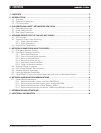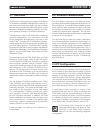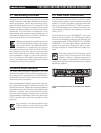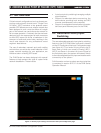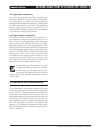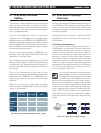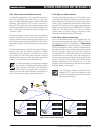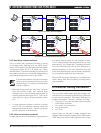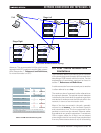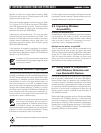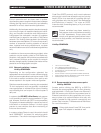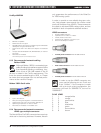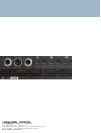
12 PLM Series Network Configuration Guide
for use in larger venues; however local legal restrictions
may apply in some countries. Please contact your Lab.
gruppen distributor for advice if necessary.
5.6 Improving Wireless
Accessibility
Primary and Secondary PC
In applications where maintaining control and monitor-
ing throughout the event is critical, and yet where
mobile control access is also desired, users should
have a primary control PC connected via wire in
conjunction with a wireless secondary PC.
Multiple access points, single SSID
Two or more access points can be connected to the
same network as long as they are given the same
SSID, the name used to identify a particular LAN within
range of a PC. (See section 7 References and Defini-
tions for more information.) The user can then move
freely around the venue and maintain connection to
the network via the closest access point.
5.7 Using Dante in Conjunction
with Wireless Networks and
Low Bandwidth Devices
For Dante to operate on a network link, the network
has to provide a bandwidth of at least 100 Mbit/s.
Hence Dante does not operate over wireless links.
In order to attach a wireless accesspoint to a Dante
enabled network, special attention needs to be taken
to make sure the Dante packets do not flood the wire-
less link. A switch that is configured to filter out the
Dante packets must be installed at the boundary of
the wireless network.
Dolby Lake legacy products such as Contour and Mesa
Processors are 10 MBit/s devices. If these devices
are to be connected to a Dante enabled network, the
same type of filtering of Dante packets is necessary.
Please refer to the Audinate document “AUD-ANO-
ACL_Filtering_SRW224G4-V2.4.pdf” for further details
regarding filtering of Dante packets.
devices (or sinks) for a given latency setting. Table
5.4 shows the limits for a Dante system with PLM
Series devices as the sinks.
The recommended system is shown in grey in Table
5.4. It has a DLP or PLM as the source (100 Mbps)
and PLM Series devices as sinks. The first and last
hops are 100 Mbps; all other hops, including those
between switches, are 1000 Mbps.
If the latency is assumed to be 1.3 ms we can have
34 hops from the source devices to any PLM. If we
assume 3 x PLMs per rack in any variant of the daisy
chained switch topologies (ring or dual chain), we
could then support a system with 33 racks, giving
99 PLMs (396 channels).
If the topology is layered or star/spoke, the system
could be even larger. The DLC PLM Edition software
user interface is designed to display 125 PLM Series
devices on an XGA screen.
A system of this size has been assembled
and verified by Lab.gruppen engineering at
our factory location.
5.5 Wireless Network Topologies
Adding wireless networking to the system provides
portable, centralized control to a distributed network
of PLM Series devices (as well as other Dolby Lake
processors.) A wireless network greatly enhances
the flexibility of control of a large audio system, as
the control location is not fixed. A wireless access
point simply works as a gateway between the wired
network and wireless devices. A Tablet PC running
the Dolby Lake Controller PLM Edition software then
communicates with the access point wirelessly, al-
lowing control of the system from anywhere in the
venue that is within wireless range
Wireless connections are generally slower
than wired connections, and can result in
varying degrees of Ethernet performance.
Connection quality can depend on the
distance and angle to the access point as well as the
presence of any surrounding interference. Strong
interference may lead to loss of connection.
Booster antennae are highly recommended
5 NeTwORk CONNeCTIONS aND TOPOLOgIeS



